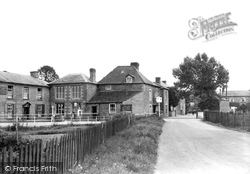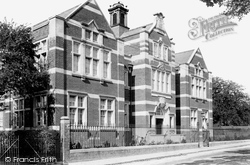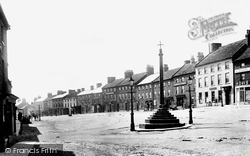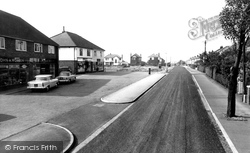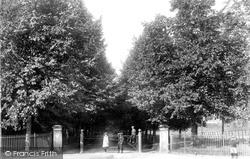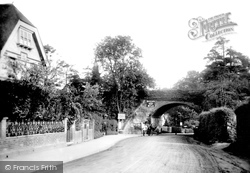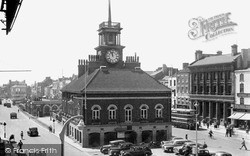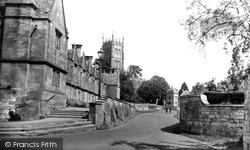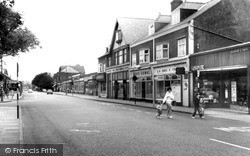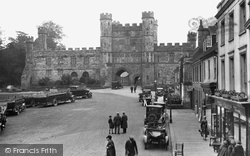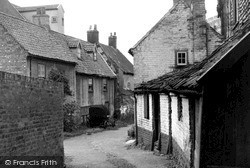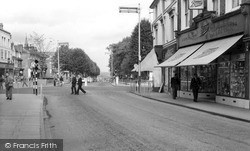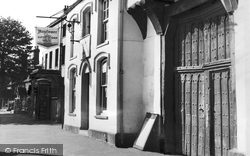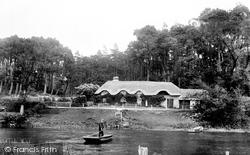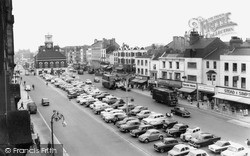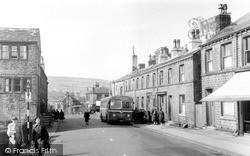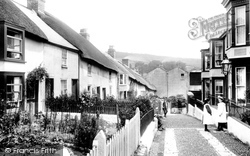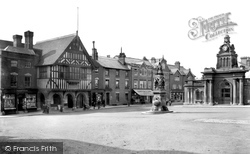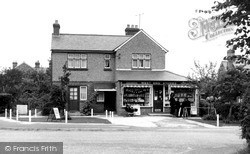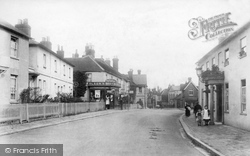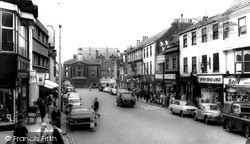Places
26 places found.
Those places high-lighted have photos. All locations may have maps, books and memories.
- Town End, Derbyshire
- Town End, Buckinghamshire
- Town's End, Somerset
- Towns End, Dorset
- Town End, Merseyside
- Town End, Cambridgeshire
- Town's End, Buckinghamshire
- West End Town, Northumberland
- Bolton Town End, Lancashire
- Kearby Town End, Yorkshire
- Town End, Cumbria (near Grange-Over-Sands)
- Town End, Cumbria (near Bowness-On-Windermere)
- Town End, Yorkshire (near Huddersfield)
- Town End, Yorkshire (near Wilberfoss)
- Town End, Cumbria (near Appleby-in-Westmorland)
- Town's End, Dorset (near Melbury Osmond)
- Town's End, Dorset (near Swanage)
- Town End, Cumbria (near Ambleside)
- Town End, Cumbria (near Lakeside)
- Town End, Cumbria (near Kirkby Lonsdale)
- Town End, Cumbria (near Ambleside)
- Town's End, Dorset (near Bere Regis)
- West-end Town, South Glamorgan
- Townend, Derbyshire
- Townend, Strathclyde (near Dumbarton)
- Townend, Staffordshire (near Stone)
Photos
26 photos found. Showing results 2,101 to 26.
Maps
195 maps found.
Books
160 books found. Showing results 2,521 to 2,544.
Memories
3,719 memories found. Showing results 1,051 to 1,060.
Bancfosfellen Pontyberrem
As a child I spent all my holidays on a farm owned by my uncle, Reg Wood and his partner, Marion. This was from the year 1964 approx. It was off the main road but then turn off down a track which seemed to go ...Read more
A memory of Bancffosfelen in 1964
Life And Times Of Suzanne Knight In New Haw.
I lived at 5 Manor Drive with my 3 sisters, Kathleen, Elizabeth and Mary. I was born in the house at 1am on a snowy night in 1954 and was delivered by my dad and Dr Poles, while Mary slept and Kathleen ...Read more
A memory of New Haw in 1954 by
My First Day
It was the 19th June 1955 when the lorry arrived at the end of our entry in St Mark's Street, Ladywood. Neighbours came out to say their goodbyes and help carry our chattles out to the lorry. I took a last look at the yard I had lived ...Read more
A memory of Rubery in 1955 by
Youngster
I remember watching rail embankment being removed with earth moving machines. The village hall at the model village. Types of equipment on recreation ground below Bainbridge Hall. Tunnel to Scareclif filled and blocked. Walking round ...Read more
A memory of Bolsover in 1860 by
Holidays At Moreton Paddox
My parents, my brother and I had about six holidays at Moreton Paddox during the early 1950s when it was a WTA (Workers Travel Association) holiday home. On occasion my grandparents or aunt and uncle accompanied ...Read more
A memory of Moreton Paddox in 1953
Dacre Cresent
Where you lived in the prefabs is where I lived on the new estate after the prefabs were pulled down and the new estate was built in the 1960s. I was born in 1968 at 83 Martin Road on the corner of Park View and lived there till 1997, ...Read more
A memory of Aveley by
Born And Bred In Wortley
I spent my childhood in Wortley, born and bred around th church of St John's the Evangelist at 35a Dixon Lane. I went to school at Upper Wortley and spent many happy hours around Wortley and "The Rec". We moved ...Read more
A memory of Lower Town in 1944 by
My Mam 1912
My mam Margaret Curran lived in Victoria Road, Gateshead and went to Victoria Road School. Her dad was down the Dunstan Colliery. She used to tell us tales of Annie Owlie who lived in Lobley Hill Woods. How she used to collect coal ...Read more
A memory of Gateshead in 1910 by
Midland Hotel Midland Road
My name used to be Sue Dear and I was born in the Midland Hotel. My family had been there for 4 generations - my Grandma was Grace Cook and she was the licensee. My aunt Sybil ran a Driving School from there ...Read more
A memory of Wellingborough in 1950 by
Growing Up When Children Were Allowed To Be Children
I was born in Dordan, Warwickshire and moved to Hurley when I was 3 years old. From that point in my life I can honestly say I had a wonderful childhood whilst growing up in the ...Read more
A memory of Hurley in 1961 by
Captions
5,111 captions found. Showing results 2,521 to 2,544.
In the days before almost everyone owned a car, quiet villages situated miles from the nearest town needed village shops able to supply all the essentials.
Built in 1906, this was the town's library until 1935, when new premises were completed in Duke Street.
In the early 19th century the town had a population of around 1,100. The poor were reasonably well cared for.
Caerphlly was primarily an industrial and market town.
The name Fulwood comes from the Old English and means 'dirty or foul wood'. Here we see the main road leading north from Preston and the Methodist Church.
'in this town is a great plenty of cherries, particularly a wild cherry that Mr John Evelyn tells me, it makes a most excellent wine, little inferior to the best French claret, and keeps longer; and
'in this town is a great plenty of cherries, particularly a wild cherry that Mr John Evelyn tells me, it makes a most excellent wine, little inferior to the best French claret, and keeps longer; and
The Town Hall stands prominently in the centre of the High Street and dates from 1735.
Judging by the crowds, this was a practice launch of the town's self-righting sailing lifeboat.
'Chipping' means 'market' in Old English, and it was as a market centre for the woollen industry that Chipping Campden rose to affluence.
Banks Road and The Crescent (W170049) form the heart of the original village. There is a wide-ranging array of shops, many of them tucked away beneath the arcades.
Here we see a busy day in the Market Place with charabancs and cars parked outside the magnificent Abbey Gateway, which was built in 1338.
This yard is typical of the long rows of houses and narrow roads built on the declivity towards the harbour in the town; many of the houses typically feature dormer windows in their roofs.
E A Hodges, the long-established, family-run stationery and news store, remained a well-known presence in town at this time.
Close to the John Wynne Almshouses, buses turned in front of the buildings and the open space was used for stalls on market day and for attractions when the fair came to the town.
Christchurch stands on two rivers, the Stour and the Avon, and gets its original name Twyneham, or Tweoxneham, from the Anglo-Saxon meaning 'the town between the two rivers'.
Cars parked down the centre of the High Street occupy the site of the historic outdoor town market, which still operates today and makes this area a very busy place on Wednesdays and Saturdays.
The old flaming torch sign (left) marks the approach to the village school in Holmfirth Road, Meltham, another Pennine edge town founded on the textile industry.
At this time the Crown and Anchor Inn, the large building at the foot of the hill, was still open and a focus for community life in Lyme Regis.With its congested, narrow streets, this is by far
It escaped demolition itself after trading ceased, and in 1975 became a library and arts centre. The building with the mock-Tudor frontage is the Town Hall.
Then came houses and shops to create today's village on either side of the A322. Two of its close neighbouring communities have the unusual names of Penny Pot and Donkey Town.
The buildings in the foreground, including the Duke's Head on the right, are in Butts Road, while Olsen's Stores (left) and those nearer the town are in the High Street.
Here we see the façade of the Market Hall (left), and in the distance the Town Hall (1785) and Assembly Rooms (1882).
The Pavilion was built in 1933 and has recently been renovated. A competition was held for a design for this theatre as early as 1928, with many architects submitting designs.
Places (26)
Photos (26)
Memories (3719)
Books (160)
Maps (195)



